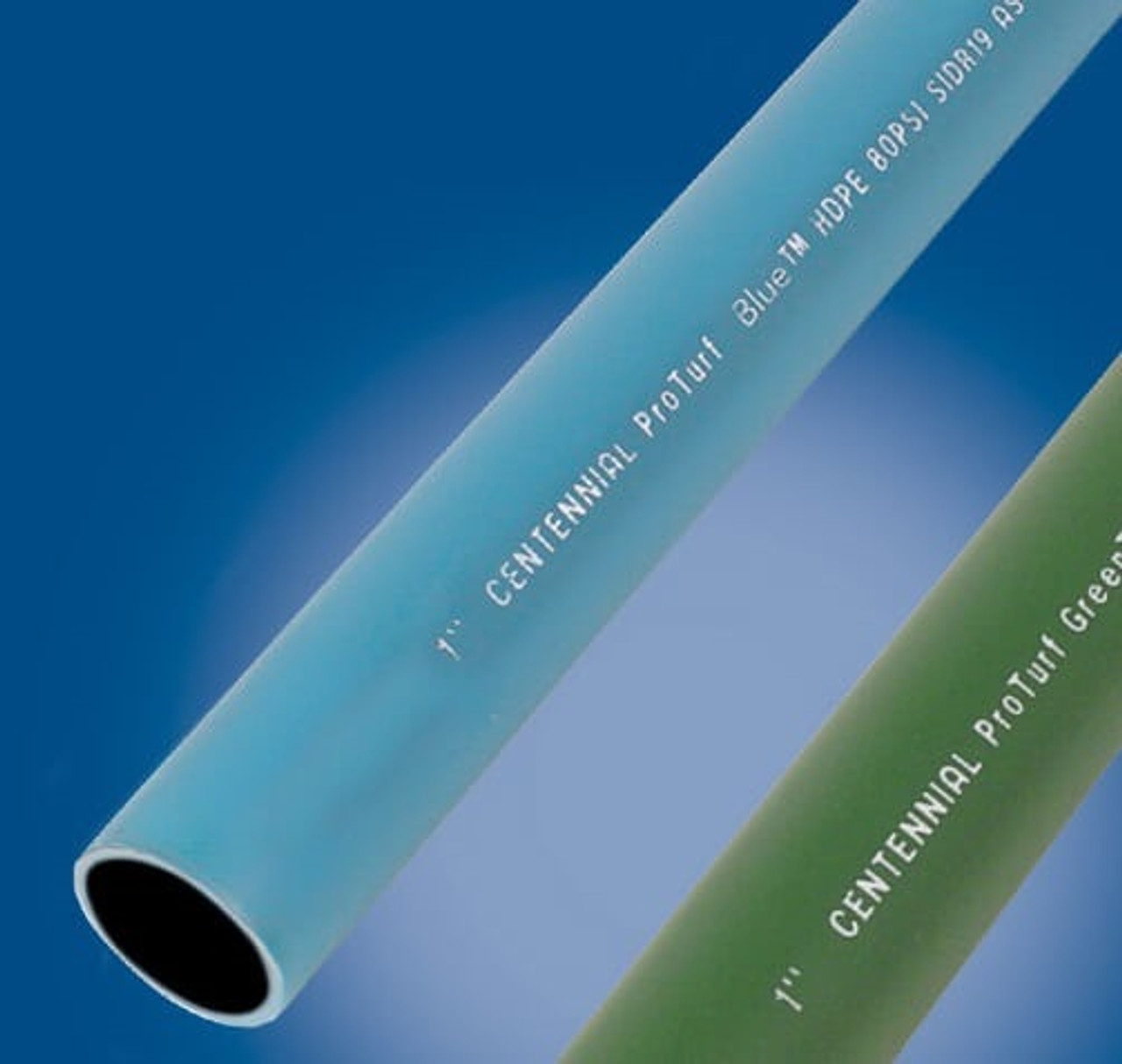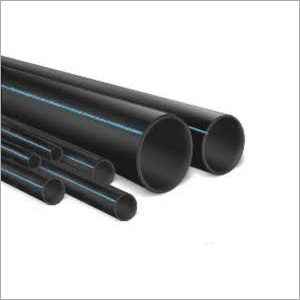American Plastics HDPE Pipe for Oilfield: Preferred in the Oilfield
Wiki Article
Explore the Manufacturing Process Behind High-Quality HDPE Pipe and Its Applications
The production procedure of premium HDPE pipes is complex and systematic. It begins with the selection of resources that boost efficiency. Following this, ethylene goes through polymerization to form resin, which is then shaped with extrusion. Quality control is vital, ensuring that the last product fulfills rigorous requirements. Nevertheless, the trip of HDPE pipelines doesn't end with manufacturing. Their applications across different industries disclose a wider relevance worth analyzing.Comprehending HDPE: Residences and Advantages

High-density polyethylene (HDPE) is a flexible polycarbonate understood for its toughness and resistance to different environmental aspects. This material exhibits superb tensile toughness, making it suitable for requiring applications. Its low-density structure contributes to a lightweight product, helping with ease of taking care of and installment. HDPE additionally showcases impressive resistance to chemicals, which decreases deterioration when subjected to extreme substances.
The product's low wetness absorption additionally improves its durability, making it excellent for usage in pipes and storage containers. Additionally, HDPE is resistant to ultraviolet (UV) radiation, guaranteeing that items maintain their honesty even when revealed to sunshine. Furthermore, its adaptability enables for the development of complex forms without jeopardizing toughness. The eco-friendly nature of HDPE, often originated from recycled materials, contributes to its allure, promoting lasting techniques in manufacturing. On the whole, these residential or commercial properties and benefits make HDPE a preferred selection for various industrial and customer applications.
Basic Material Choice for HDPE Manufacturing
The option of raw materials for HDPE production is important to verify the last item meets the preferred requirements and quality standards. High-density polyethylene (HDPE) is primarily generated from polymerized ethylene, stemmed from fossil fuels such as gas or petroleum. The top quality of these feedstocks considerably influences the mechanical and thermal homes of the last HDPE.Ingredients likewise play a substantial role in enhancing HDPE's performance, including anti-oxidants, UV stabilizers, and colorants, which enhance sturdiness and resistance to environmental elements. The choice procedure have to take into consideration not just the chemical make-up of the raw products yet additionally their handling characteristics to guarantee efficient production.
Moreover, the sourcing of resources must prioritize sustainability and compliance with environmental regulations, as accountable practices are critical in today's market. Ultimately, mindful resources selection lays the foundation for creating premium HDPE pipelines suitable for diverse applications.
The Extrusion Process: Forming HDPE Pipeline
The extrusion process plays a vital function fit HDPE pipelines, starting with meticulous material preparation strategies that ensure perfect flow and consistency. Similarly essential is the layout of the die, which straight affects the final dimensions and surface area quality of the pipeline. Together, these aspects contribute substantially to the efficiency and quality of HDPE pipeline manufacturing.Product Preparation Methods
Reliable production of HDPE pipes begins with thorough material prep work methods, particularly the extrusion process. Throughout this phase, high-density polyethylene material is initial dried to get rid of wetness, making certain ideal flow features. The resin is after that fed into the extruder, where it goes through home heating and melting, changing right into a viscous state. This heating process is meticulously regulated to maintain the material's stability and efficiency. The molten HDPE is compelled via a die, shaping it into a continuous pipeline kind. Correct temperature management during extrusion is important, as it straight influences the material's properties and the final product quality. When shaped, the HDPE pipe is cooled and cut to specified lengths, ready for subsequent processing and applications.Die Layout Importance
Precision in die layout plays a vital role in the extrusion process of HDPE pipes. The die functions as the final shaping tool, straight influencing the pipe's dimensions, wall surface thickness, and surface finish. A well-designed die warranties uniform material circulation, decreasing issues such as abnormalities and weak areas. The geometry of the die should be maximized to accommodate the specific residential properties of HDPE, including its thickness and thermal actions throughout extrusion. In addition, the read cooling rate of the material as it goes through the die can considerably influence the pipeline's structural honesty. As a result, spending in advanced die innovation is important for suppliers intending to generate high-grade HDPE pipes that meet industry standards and consumer expectations.Quality Assurance Steps in HDPE Production
Although various factors affect the top quality of HDPE pipe manufacturing, efficient top quality control procedures are crucial to guarantee consistency and integrity in the final product. Key quality assurance methods consist of strenuous material inspection, verifying that the raw polyethylene satisfies recognized criteria for pureness and thickness. Throughout the extrusion process, criteria such as temperature level, stress, and cooling time are very closely checked to maintain dimensional accuracy and architectural honestyFurthermore, post-production testing is important; manufacturers usually carry out hydrostatic tests to analyze the pipeline's toughness and resistance to pressure. Aesthetic assessments for surface issues better boost quality control. Qualification from pertinent criteria companies, like ASTM or ISO, offers an added layer of trustworthiness. By implementing these extensive quality control measures, makers can decrease issues, boost efficiency, and make certain that the HDPE pipelines satisfy the particular demands of different applications, ultimately resulting in customer contentment and count on the product.
Applications of HDPE Pipeline Throughout Industries
HDPE pipelines are utilized across numerous markets due to their sturdiness and convenience. In water circulation systems, they ensure efficient distribution, while in wastewater management, they give trustworthy remedies for waste transportation. Additionally, agricultural irrigation networks profit from HDPE's resistance to corrosion and flexibility, making it a perfect selection for contemporary farming practices.
Water Distribution Systems
A significant number of markets depend on high-density polyethylene (HDPE) pipes for effective water distribution systems. Known for their durability and resistance to deterioration, HDPE pipes are commonly used in municipal supply of water networks, farming watering, and industrial applications. Their light-weight nature facilitates very easy handling and setup, minimizing labor expenses and time. Furthermore, HDPE pipelines can suit various stress degrees, making them suitable for both reduced and high-pressure systems. hdpe pipe in stock Midland TX. The versatility of the product permits smooth assimilation right into existing infrastructure, decreasing the requirement for extensive excavation. HDPE's resistance to chemical seeping assurances that the water provided continues to be secure and clean, making it an optimal selection for maintaining the quality of potable water across numerous markets.Wastewater Monitoring Solutions
Reliable water circulation systems also pave the way for ingenious wastewater management services, where high-density polyethylene (HDPE) pipes play a substantial role. Renowned for their sturdiness and resistance to corrosion, HDPE pipelines are excellent for delivering wastewater in different setups. Their versatility enables very easy setup in complicated atmospheres, reducing the need for comprehensive excavation. Additionally, HDPE's smooth interior surface lowers rubbing, boosting flow prices and efficiency. These pipelines are likewise resistant to chemical leaching, making certain that pollutants do not compromise the surrounding setting. Industries, municipalities, and treatment facilities progressively depend on HDPE pipes for their reliability and longevity, making them a preferred selection for modern-day wastewater monitoring systems. This flexibility highlights the crucial significance of HDPE pipes throughout many applications.Agricultural Watering Networks
Agricultural watering networks benefit considerably from using high-density polyethylene (HDPE) pipes, which supply effective and reliable water delivery to crops. HDPE pipes are lightweight, making them very easy to transfer and set up, while their versatility permits for various setups in diverse terrains. These pipes demonstrate outstanding resistance to corrosion, chemicals, and UV radiation, guaranteeing longevity in severe agricultural environments. In addition, their smooth interior surface reduces rubbing loss, optimizing water circulation and decreasing energy costs linked with pumping. The durability of HDPE pipes, often exceeding 50 years, adds to decrease see this maintenance and substitute expenses. Subsequently, farmers significantly depend on HDPE pipelines to boost irrigation performance and advertise lasting agricultural practices, inevitably causing improved plant returns and source preservation.Future Patterns in HDPE Pipeline Technology
As the demand for lasting and efficient facilities expands, advancements in HDPE pipe technology are positioned to change various sectors. Arising patterns consist of the combination of clever technologies, such as sensing units and IoT capabilities, which help with real-time monitoring of pipeline conditions, minimizing upkeep costs and protecting against leaks. Furthermore, the development of innovative manufacturing strategies, such as 3D printing, is allowing the manufacturing of Recommended Site complicated, tailored pipeline designs that cater to specific job demands.Furthermore, the focus on recycling and circular economy practices is driving the innovation of HDPE pipes made from recycled products, boosting sustainability. Improved jointing methods, such as electro-fusion and mechanical fittings, are also boosting installment efficiency and dependability. The growing focus on ecological policies is pressing makers to adopt greener production procedures, guaranteeing that HDPE pipelines not only satisfy market criteria however also cultivate a more sustainable future for framework advancement.
Frequently Asked Inquiries
Exactly How Does HDPE Compare to Other Plastic Products?
HDPE outperforms many other plastic materials regarding durability, chemical resistance, and flexibility. Its low thickness and high tensile stamina make it ideal for different applications, usually exceeding choices in both efficiency and long life.What Are the Ecological Effects of HDPE Manufacturing?
The ecological effects of HDPE manufacturing include greenhouse gas exhausts, energy intake, and potential contamination from manufacturing processes. Furthermore, incorrect disposal can bring about soil and water contamination, increasing problems about long-lasting environmental effects.Can HDPE Piping Be Recycled?
Yes, HDPE pipelines can be reused. Many facilities accept used HDPE for processing, changing it into new items. This reusing adds to sustainability initiatives, minimizing plastic waste while conserving sources and energy in the production cycle.What Is the Life Expectancy of HDPE Water Lines?

How Do Temperature Variants Affect HDPE Pipeline Efficiency?
Temperature variants significantly affect HDPE pipe efficiency, impacting flexibility and toughness. High temperatures can result in softening, while reduced temperatures may trigger brittleness, ultimately influencing the pipe's toughness and suitability for different applications in diverse atmospheres.Report this wiki page